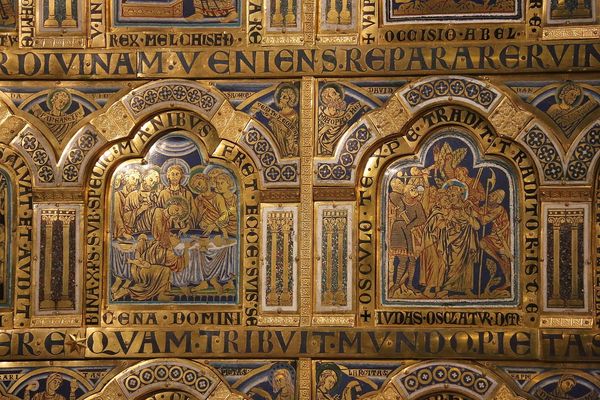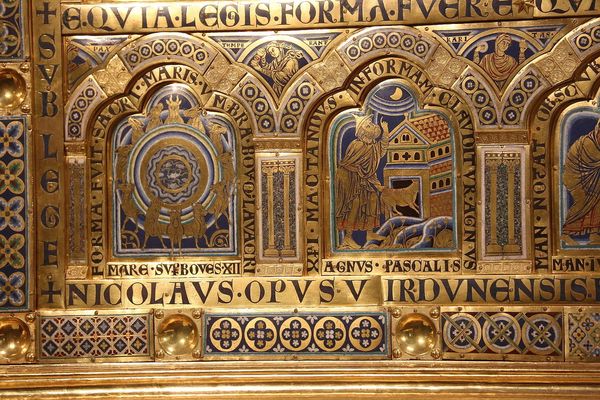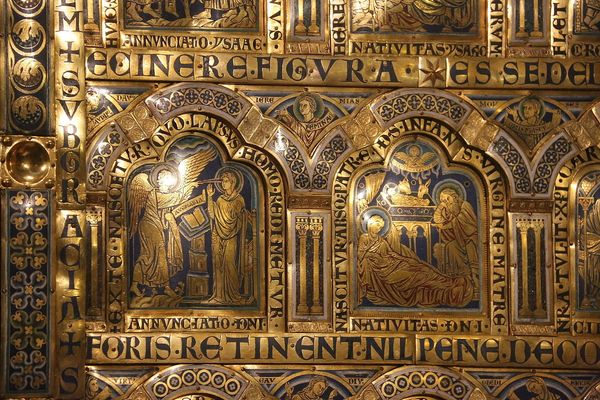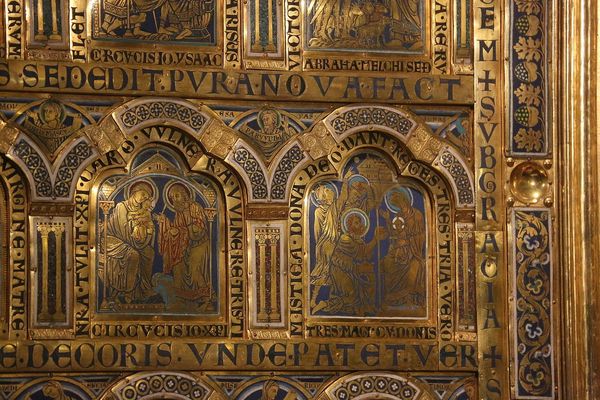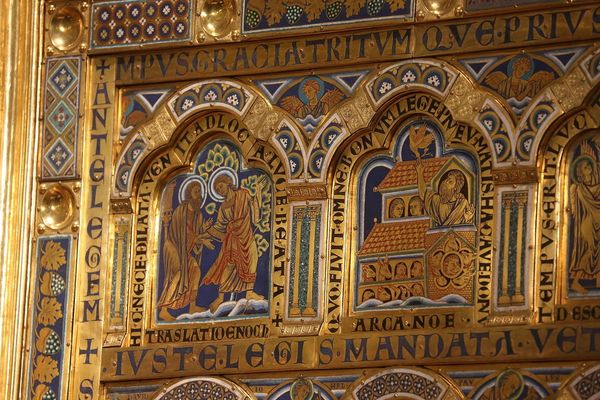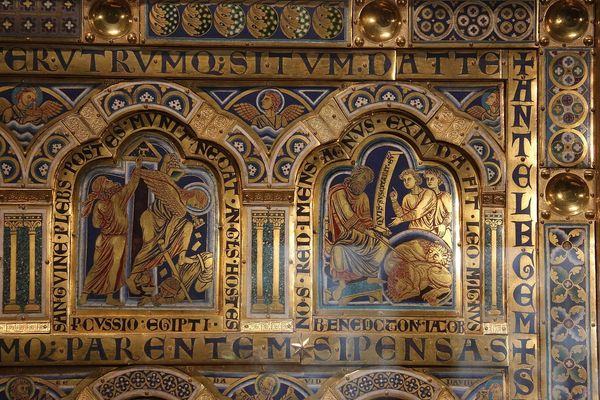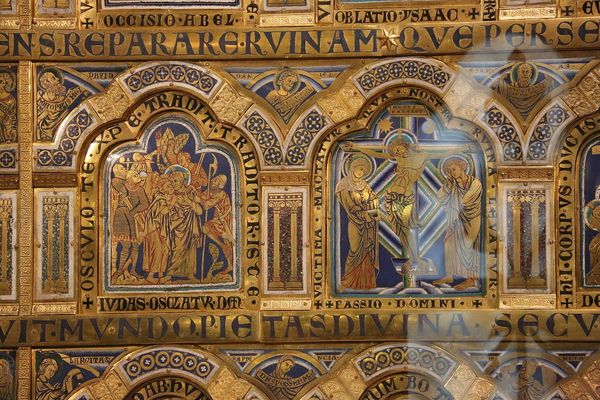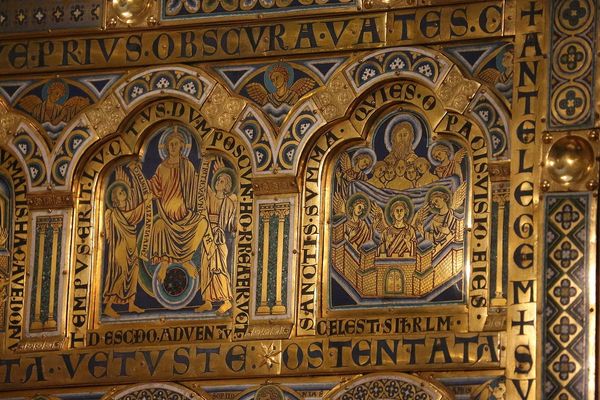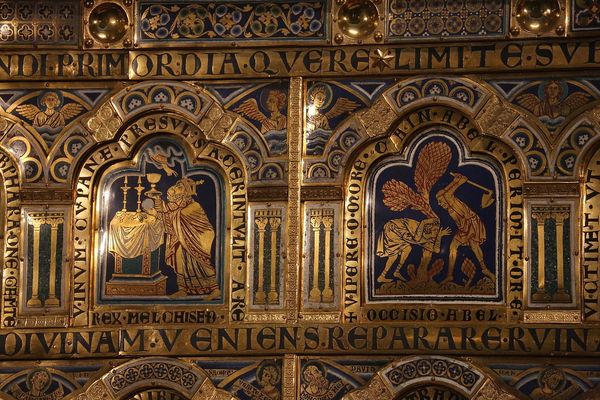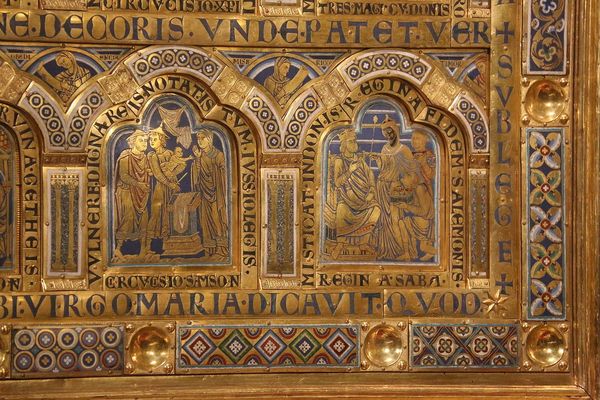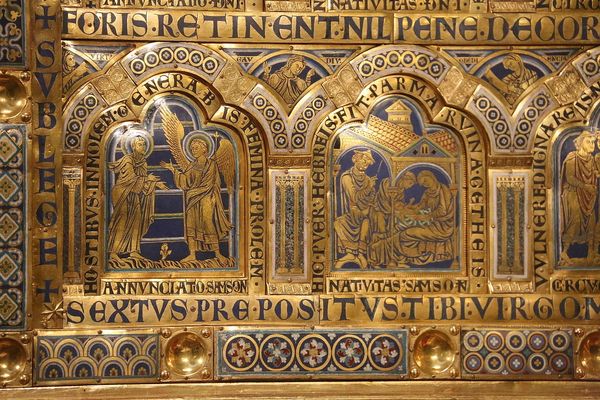
mosaic, carving, tempera, metal, gold, relief, guilding, sculpture
#
mosaic
#
byzantine-art
#
medieval
#
carving
#
narrative-art
#
tempera
#
metal
#
sculpture
#
gold
#
relief
#
holy-places
#
guilding
#
historic architecture
#
traditional architecture
#
sculpture
#
history-painting
#
historical building
Copyright: Public domain
Editor: This is the Klosterneuburg Altar, crafted in 1181 by Nicholas of Verdun. It’s made from gilded copper, enamel, and precious stones. The gold is striking, and the various scenes seem very intricate and busy. What do you see in this piece that I might be missing? Curator: The most striking feature is the visual dialogue between the Old and New Testaments. It isn't merely decorative, but carries significant emotional and cultural weight. The panels depict parallel narratives. For instance, can you identify any symbolic pairings intended to invite the viewer to interpret the scriptures as reflections of each other? Editor: I see panels with imagery depicting Moses next to some depicting Jesus. Are those examples of Old and New Testament pairings? Is there any evidence that this juxtaposition of narratives was intentional, beyond the layout of the panels? Curator: Precisely! Nicholas of Verdun consciously employed typological symbolism, a common practice in medieval art. Each Old Testament scene prefigures, or foreshadows, an event in the life of Christ. It speaks to a deeply embedded cultural memory that found visual expression. See how "The Sacrifice of Isaac," for example, aligns conceptually with the Crucifixion? Notice the lines from scripture too. Editor: Ah, yes! I hadn't considered the relationship between the narratives. Seeing them side-by-side highlights those connections, strengthening their spiritual meaning. Curator: Absolutely. Nicholas uses visual and textual cues to reinforce theological understanding. It serves as a window into the medieval mindset and its fascination with finding divine patterns in history. Editor: This really highlights the symbolic nature of religious art and how it functions as a historical and theological text. Thanks for sharing your insight. Curator: My pleasure. Now, consider how this visual language resonates across time; traces of it appear even today, influencing modern symbol systems.
Comments
No comments
Be the first to comment and join the conversation on the ultimate creative platform.
